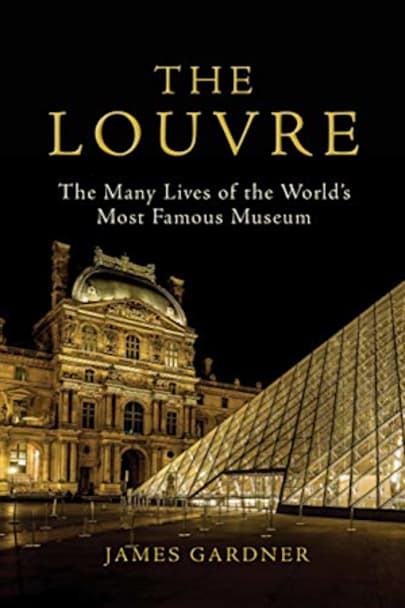The fascinating and little-known story of the Louvre, from its inception as a humble fortress to its transformation into the palatial residence of the kings of France and then into the world’s greatest art museum Some ten million people from all over the world flock to the Louvre each year to enjoy its incomparable art collection. Yet few of them are aware of the remarkable history of that place … place and of the buildings themselves—a fascinating story that historian James Gardner elegantly chronicles in the first full-length history of the Louvre in English. More than 7,000 years ago, men and women camped on a spot called le Louvre for reasons unknown; a clay quarry and a vineyard supported a society there in the first centuries AD. A thousand years later, King Philippe Auguste of France constructed a fortress there in 1191, just outside the walls of a city far smaller than the Paris we know today. Intended to protect the capital against English soldiers stationed in Normandy, the fortress became a royal residence under Charles V two centuries later, and then the monarchy’s principal residence under the great Renaissance king François I in 1546. It remained so until 1682, when Louis XIV moved his entire court to Versailles. Thereafter the fortunes of the Louvre languished until the tumultuous days of the French Revolution when, during the Reign of Terror in 1793, it first opened its doors to display the nation’s treasures. Ever since—through the Napoleonic era, the Commune, two World Wars, to the present—the Louvre has been a witness to French history, and expanded to become home to a legendary collection, including such masterpieces as the Mona Lisa and Venus de Milo, whose often-complicated and mysterious origins form a spectacular narrative that rivals the building’s grand stature. Includes a 16-page full-color insert, featuring images illustrating the history of the Louvre, a full-color endpaper map detailing the Louvre’s evolution from fortress to museum, and black-and-white images throughout the narrative.
more



The Louvre tells the story of the amazing building and its inhabitants from its beginning as a relatively small fort on the banks of the Seine River through its multiple renovations up to its current standing as the world’s largest and most storied museum.
While the content of the books is fascinating, it is sometimes hard to follow. The author seems to assume the reader is familiar with French history, notables, geography and the layout of the Louvre. Since its been over 50 year since I was in Paris, I often had to resort to researching on the Internet to find out what he was referencing. I read an ARC from NetGalley which had minimal illustrations and no plan of the Museum. I went to the book page on Amazon and was able to Look Inside the final Kindle version and see a map, which I snipped and pasted and printed and that helped somewhat. I spent as much time researching as I did reading, which broke the continuity of my reading. I don’t know what the hardback or paperback versions had to help with visualizing what the text covered.
I would recommend the book to anyone who is familiar with the Louvre and French history. It would make a great companion to a trip to Paris and the museum and its surroundings. There was an amazing amount of detail and information and I’m glad that NetGalley and the publisher allowed me a copy of the book. If I ever make it back to Paris, it will definitely go with me.
Fascinating Yet Disappointing
I’ll admit that I am a little disappointed in this book. The history of the grand old museum is actually a surprisingly fascinating read, tracing its roots from the Renaissance, through various Kings and emperors (and even a time when it was abandoned), to the modern day. I was hoping for more pictures of either inside the museum itself or of some of its works. There are some pictures of the art and a colorful map of the different parts within the Louvre. Even more disappointing is that the few pictures in the book are in black and white! This could have been a truly awesome work if it showcased more of the Louvre itself and its art—and if those photos had been in color!
I received a free copy of this book, but that did not affect my review.
History comes alive in this wonderful book. The Louvre is one of my all time favorite museums and this book was a revisit with the added history of France. Fantastic. This is very well written and dense with historical details. So much more than the home of the Mona Lisa and the Venus de Milo and the backdrop for the movie The DaVinci Code. The site has grown from a gathering place thousands of years ago to becoming a fortress and a palace. I often wish the walls could speak and this book does a very good job giving this world treasure a voice. I thoroughly enjoyed my visit with The Louvre.
My thanks to the publisher Grove Atlantic and to Edelweiss for giving me an advance copy in exchange for my honest review.